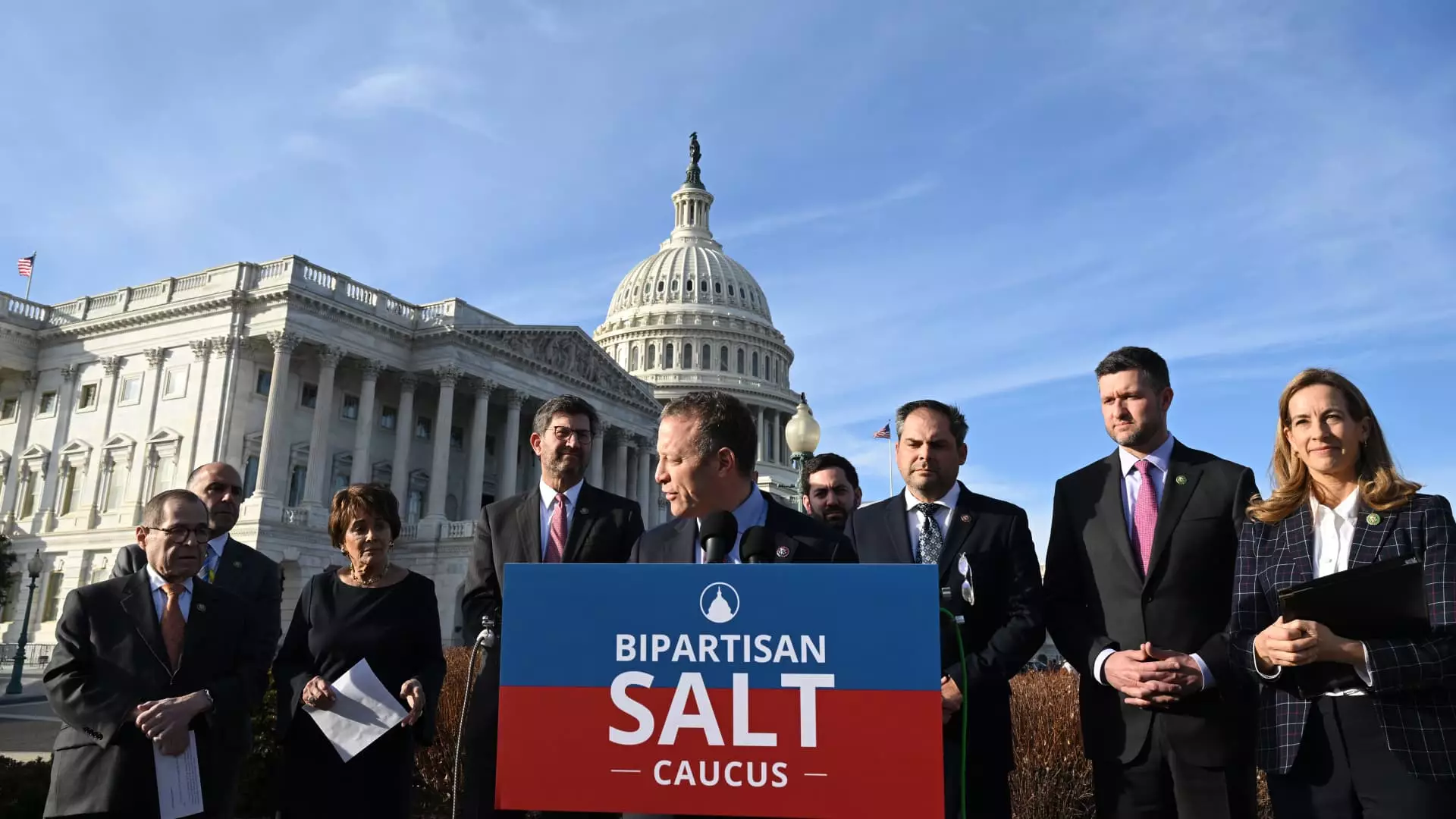The state and local tax (SALT) deduction has ignited fierce debates among lawmakers, particularly as the looming 2025 taxation landscape approaches. Enacted as part of the Tax Cuts and Jobs Act (TCJA) in 2017, the current $10,000 SALT cap has become a focal point of contention, especially for residents of higher-tax states like California, New Jersey, and New York. Critics argue that this cap unfairly burdens taxpayers in these states, and with the clock ticking toward its expiration without congressional action, it raises profound questions about fiscal equity and representation. The political tug of war surrounding the SALT deduction is revealing not only the stark divisions within our government but also the deep economic disparities faced by the American populace.
The Rush for Tax Equity
Although the SALT cap has been politically charged since its inception, it’s crucial to recognize the ramifications it carries for the average taxpayer. Before the enactment of the TCJA, taxpayers could deduct their state and local taxes without limitation, considerably easing their financial burdens. The SALT deduction previously served not only as a financial relief mechanism but also as an acknowledgment of the tax contributions that Americans make to their local economies. Now, the demographic skew of who benefits disproportionately from this cap—the wealthier residents of high-tax states—has further complicated the tax landscape, ensuring that the voices of middle and lower-income families are frequently drowned out.
In this climate, some lawmakers are advocating to raise the SALT cap to $20,000 for married couples filing jointly, a move that estimates suggest could cost taxpayers approximately $170 billion. This tug-of-war for tax equity underscores a vital legislative reality: tax reform must serve as a moral compass aiming to balance fiscal responsibility and individual fairness.
Trump’s Uncertain Future on Tax Policy
The paradox is that former President Donald Trump, who initially championed the $10,000 cap, now finds himself advocating for its removal in light of potential re-election in future cycles. This flip-flopping creates a perception of insincerity, placing Trump at odds with the responsibility and reliability expected from public officeholders. His statement about wanting to “get SALT back” symbolizes a shift in his political playbook—one may wonder if this is an authentic pivot or merely a desperate maneuver to gather votes.
With Trump’s renewed calls for reform—a call met with skepticism by both insiders and outsiders—there exists an impending reality: actual change may be challenging to implement due to the competing priorities fighting for congressional attention. The rich tapestry of individual and estate tax provisions enacted during the TCJA is set to unravel post-2025 unless lawmakers are willing to act swiftly and collectively, an alignment that appears increasingly elusive given the polarized state of contemporary politics.
The Financial Fallout of Inaction
A core justifiable concern in the SALT cap debate is the dramatic loss in federal revenue if proposals to remove or adjust it are upheld. The Committee for a Responsible Federal Budget projects a staggering $3.9 trillion loss over the next decade if individual and estate tax provisions are extended. This is not merely a numerical exercise; these figures represent real implications for public services, welfare support, and community funding. As legislators wrestle with the intricacies of tax reform, they must confront the unavoidable truth: finding a balance between necessary tax cuts and sustainable public financing is an intricate dance.
Lest we forget, this issue is not isolated to fiscal policy alone but is entwined with ideas surrounding fairness and equal treatment. The attempt to accommodate tax relief for affluent individuals through SALT reform might come at the expense of lower-income individuals, essentially perpetuating a cycle of economic disparity. Lawmakers must acknowledge this balance in their pursuit of aggressive tax cuts or face public backlash.
The next few years could prove pivotal for shaping the future of fiscal policy and addressing the multitude of economic inequalities plaguing American citizens. The SALT cap debate is further complicated by the realities of our political landscape, revealing that fiscal responsibility is indeed an issue that transcends party lines; it represents the very fabric of equity and justice that should underpin our taxation system.

